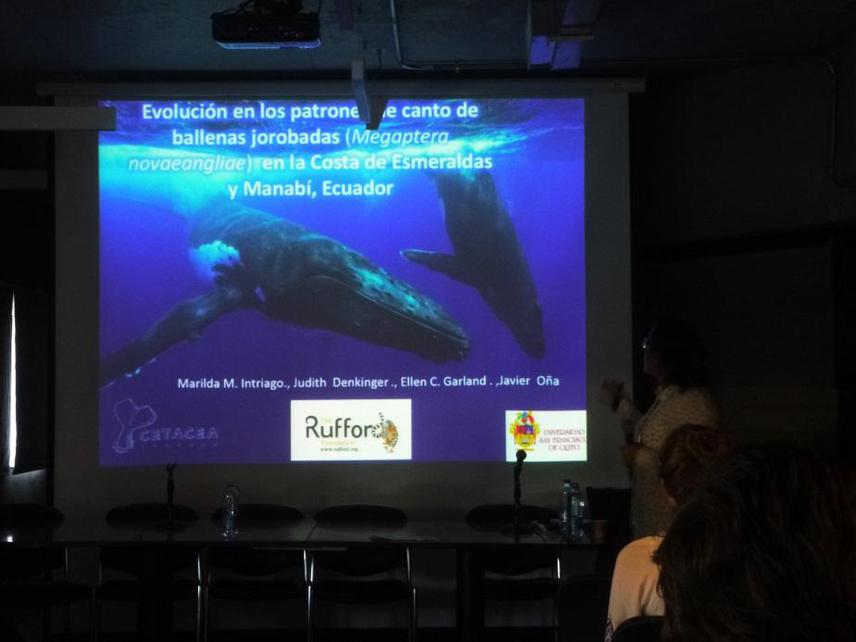Javier Paul Oña Lema
Other projects
21 Jun 2012
Humpback Whale Habitat Preference and Occurrence of Songs as an Initiative to the in Stiu Conservation in the Coast of Bajos de Atacames, Esmeraldas, Ecuador
16 Jun 2016
Song Occurrence and Culture of Humpback Whales Breeding Off the Coast of Ecuador
Identify key marine areas for humpback whales conservation by investigating noise pollution within humpback breeding grounds, and organize educational activities inside local community to raise awareness and support for local conservation efforts.

The Southeastern Pacific region is experiencing increased acoustic pollution from tourism activities, fishing vessels, commercial maritime traffic, and oil explorations. Humpback whales are among the best studied cetaceans around the world; however essential information on their behavioral ecology at little known breeding grounds is lacking. Therefore, research on their spatial distribution, habitat preference and acoustic behavior forms an essential first step to improve conservation measures. Our previous work in the northern coast of Ecuador indicates a temporal slight segregation in their social structure (e.g. singletons, pairs, competitive groups, mother and calf, singers) and habitat preference primarily of shallow water and occasionally of offshore waters.
In this second phase, visual and acoustic monitoring will be conducted between June and September. We will extend our study area from the Esmeraldas’ coastal waters towards deeper offshore waters (> 200 m depth). Daily line transects routes predetermined will be conducted covering the entire research area with a standardized ad hoc acoustic sampling effort every 30 min. Information on the position will be determined using a GPS unit and acoustic samples will be recorded on a digital sound recorder. Furthermore, sea state, presence of whales, behavior, underwater sound pollution, and the exact time of recordings will be noted.
The information on social groups including singers (stationary or moving males singing) will be overlapped on topographic and bathymetric maps using Geographical Information Systems (GIS). Then we will carry out spatial distribution analyses of social groups and occurrence of songs to explore habitat requirements such as nursery or calving and predict the extent of breeding areas within the region. Moreover, information on shipping routes will be added to the maps in order to facilitate the elaboration of key conservation habitats that could extend into offshore waters of the coast of Esmeraldas.
During our first educational campaigns conducted in the first phase of the project, we recognized a lack of educational initiatives with respect to the protection of oceans. Therefore, in this second phase we aim to invite local schools to participate in whale watching and research tours. In this way we hope to raise the support of local communities by linking teachers, fishermen, the local government and researchers. Furthermore, our goal is to encourage a cultural and environmental awareness, which recognizes the importance of the Ecuadorian coast and offshore waters to humpback whales.